2014
Jun
06
Greebling and the Future of Starships
Even if you haven't heard of greebling before, you know what it is. It's that addition, in 3D modelling, of all kinds of silly and realistically unnecessary detail just to add interest. It has a history in Hollywood, albeit one much shorter than the history of Hollywood itself.
As of today, it has become the trend. Emphasis on "the." It is so popular that there are greebling add-ins for all major 3D modeling packages, and when I did a little research on the topic, I found them for 3D packages that I'd never even heard of before. Here we see some examples. Yes, the greebled cylinder is a lot more visually interesting than the ungreebled one, though underneath, they are the same cylinder. The texture image shows a different style of greebling, which is applied in a totally different way, as a bump map. (It might be fun trying to apply it as a displacement map, just to see if your computer blows up.)
However, one has to wonder if anyone would actually build a spaceship with all those unexplained accoutrements on the outside. Let's take a look at the history and see how we got to this curious state of affairs.
In the beginning, before greebling
One of the most famous of all movie spaceships is the Space Ark from When Worlds Collide (1951). Here we see it under construction. This film occurred at a time when space flight was still a vivid dream for the future, but movie spaceships in most ways fairly well resembled those that real engineers were speculating about.
These spaceships (OK, rocket ships, if you remember) were modeled after the early jet aircraft of the day that were designed to actually fly. They were all smooth-skinned except where it was absolutely necessary to have something placed there, and even then the protrusion was minimized. We have to allow that these vehicles were expected to fly in the atmosphere, and therefore had to be aerodynamic.
For a ship that doesn't land on planets, aerodynamics is not an engineering consideration, but pressure hulls are. The designers are left with two options: put all that cool-looking stuff outside the pressure hull, in which case no one can go there without a space suit, or contort the pressure hull into those shapes and therefore compromise its strength. Why bother?
The birth of greebling?
Let's jump ahead to 1968. 2001: A Space Odyssey was a landmark film, especially in special effects. The book was written by Arthur C. Clarke, who is well-known for using the left side of his brain in addition to the right, and so his spaceships look like an actual engineer was involved somewhere.
I wish I had found a better image of the Discovery, but this one is good enough to see the general features. The crew compartment up front is separated by that long neck from the radiation of the nuclear engines in back. There is some detail on the engine section, not too unreasonable. If memory serves, those prismatic sections on the neck are heat radiators, which are not only reasonable but necessary. Leave it to Clarke to work in thermodynamics; even I generally ignore it because it gets messy. The word greeble didn't exist at the time; I think Kubrik called his decorations widgets, but don't quote me on that.
But look at the crew compartment. You can see that it is composed of sections (like a real spaceship) and the decorations are limited to access points and the cockpit window. All in all, the Discovery is quite believable.
The greebling explosion
Believe it or not, it was just nine years between 2001: A Space Odyssey and Star Wars. It was someone at Industrial Light and Magic who came up with the term greeble; I don't know that it has a more interesting etymology than that. When they built the Star Destroyer model, before CGI was in common use, they bought up dozens or hundreds of plastic model kits and glued the unassembled pieces to styrofoam to add all of that detail. Rumor has it that one of the greebles somewhere is actually a plastic soldier, but I'm not motivated to look for it.
The claim was made that the result was a more believable spaceship, but one has to ask, "Believable for whom?" An engineer such as myself is going to wonder what all those doo-dads are for, and who the kook was that decided to build a spaceship that way. (Probably the same kook that put a deep, dangerous, unprotected power shaft right next to the Emperor's throne, but that's another problem.) Greebling went supernova with the Death Star. The image here is not from the actual production. It's a model made by a fan, but unless your memory is godlike, you won't know the difference. Yes, it looks cool, but what's all the stuff for? And why would you put a trench there leading up to an energy port except for Luke to be able to say, "It's just like Beggar's Canyon back home!"
It seems that after Star Wars, everything in space had to be greebled, the Battlestars, for example. Google for images of spaceship artwork. Almost all of them are greebled, as if there is some new law in effect. Forget engineering and realism, it just has to look awesome! For a second or two, I actually thought of greebling the hull of the Trarsani coupe in A Hierarchy of Gods, but I promptly slapped myself down.
A return to sanity: minimal greebling
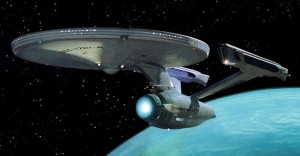 Now we get to the grand prize. Star Trek: The Motion Picture was the first film that seemed realistic enough that I actually felt like I was aboard a spaceship. They must have done something right with the sets and models.
Now we get to the grand prize. Star Trek: The Motion Picture was the first film that seemed realistic enough that I actually felt like I was aboard a spaceship. They must have done something right with the sets and models.
I'm not sure which film, if any, this image came from, but take a good look. You can see the segments composing the hull. The are lights, access points, windows, the Starfleet logo. There are some interesting details on the warp nacelles, and I'm sure that some current-generation Trekkie can tell you exactly what they are for.
No greebles.
Maybe that's why I felt like I was aboard a real spaceship. There is no nonsense, only what a real starship designer would put on a real starship. Someone at Industrial Light and Magic might have thought that all that junk on the outside of a Star Destroyer made it more "believable," but the Enterprise is more believable to me.
In all fairness, Babylon 5 has some curious detail in spots, but in general has a believable surface. Star Trek is not alone. Also in all fairness, the Borg cubes from Star Trek are greeble hell.
There is no greebling on real spacecraft
 Let's take a look at something actually in space. I chose a module of the International Space Station, and ended up with Japan's Kibo module just because that's the first one I found a close-up of.
Let's take a look at something actually in space. I chose a module of the International Space Station, and ended up with Japan's Kibo module just because that's the first one I found a close-up of.
There's not a whole lot there to see. A couple of gizmos that I didn't research. Those coppery tubes that look like handles? Well, they're actually handles, for extravehicular activity. All in all, it's pretty smooth; only in the instrument pallet at the end is there much detail. I picked a part of the ISS for the very reason that aerodynamics were not a consideration in designing the hull, and even so, it's pretty smooth.
Real spacecraft are not greebled.
Greebling as buffoonery
In the world of 3D modelling, we know that detail adds to realism: slight structural deformations, chamfered edges, smudges, scratches, dings. Let's amend that and say that realistic detail adds to realism. Unrealistic detail, senseless detail just for detail's sake, not necessarily so.
Greebling can be put to good use in modeling cities, such as this model of Coruscant. But that's because cities really look like that. They have a large number of random shapes sticking up from the ground. Maybe that's why the surface of the Death Star looks less like a space station and more like someone decided to build a city there.
So I'm in the "Realism without greebling" camp. On the other hand, I know that some people are totally awed out by all that senseless detail.
Let me know your thoughts about it.


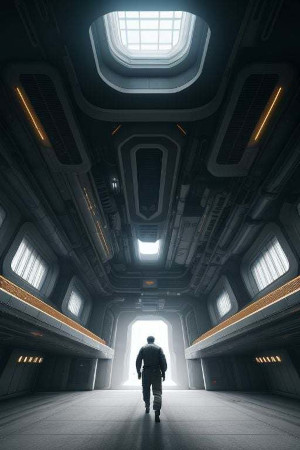








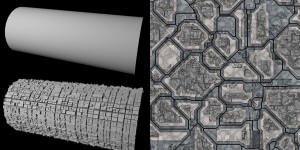
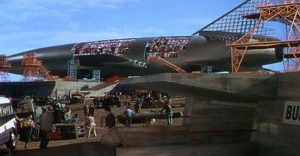

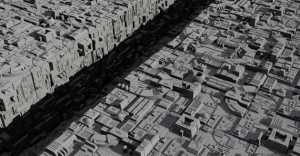




Comments
by Anonymous on 2015 Apr 28
You misunderstand the purpose of greebling. It exists as a way of adding visual appeal to what would otherwise be a smooth, boring surface by breaking it up and adding detaill, while at the same time aiming to add a believable level of complication to the design. For example, the surface of the Kibo module there may be relatively smooth, but it is not greeble-less. Those handles, the piping, any and every bit detailing on the outside of the hull can be considered greebling, or else what greebles are meant to be simulating.
by Blaze on 2016 Jan 12
Yeah, I would agree with the previous post. You seem to know what "greebling" is, but the purpose of it in science-fiction seems to be a bit lost. For example, you compared the "Enterprise" from the first few "Star Trek" movies as having a reasonable amount of greebling compared to, say, the "Death Star" in "Star Wars". The problem with this is that you aren't taking into consideration the (fictional) size of the two spacecraft. The "Death Star" is described as the size of a small moon crewed by potentially millions of people. While the "Enterprise" is a great deal smaller and only has a few hundred. Compare it against the smaller craft in Star Wars, the X-Wings, A-Wings or TIE-Fighters. They have much smoother surfaces with much less greebling. As mentioned, the "Death Star" is more like a floating city than it is a space ship. And all the excess towers and other detail on the surface make it look more like a city. The same as with the "Star Destroyers" in the films. They are really floating cities. The "Millennium Falcon" is heavily greebled, but its supposed to look kind of bolted together, ad hoc. It was meant to be a kind of ugly-duckling of a ship, a collection or random parts scavenged from other ships. The "Borg Cube" in Star Trek is a marvelous design as it was meant to look somewhat disturbing in its very lack of design. It is a monstrosity a nightmare of random, chaotic plumbing everywhere. There is no designer here. It is a product of a technological virus run amok. In the show, the "Enterprise" crew aren't even sure what to shoot at when looking at the "Cube". And that is the point. But more than that, these ships which may look like an engineering nightmare are that way because they are "alien". In part we don't understand everything about them because they were not build by Earthlings.
by Anonymous on 2015 Apr 28
You misunderstand the purpose of greebling. It exists as a way of adding visual appeal to what would otherwise be a smooth, boring surface by breaking it up and adding detaill, while at the same time aiming to add a believable level of complication to the design. For example, the surface of the Kibo module there may be relatively smooth, but it is not greeble-less. Those handles, the piping, any and every bit detailing on the outside of the hull can be considered greebling, or else what greebles are meant to be simulating.
by Blaze on 2016 Jan 12
Yeah, I would agree with the previous post. You seem to know what "greebling" is, but the purpose of it in science-fiction seems to be a bit lost. For example, you compared the "Enterprise" from the first few "Star Trek" movies as having a reasonable amount of greebling compared to, say, the "Death Star" in "Star Wars". The problem with this is that you aren't taking into consideration the (fictional) size of the two spacecraft. The "Death Star" is described as the size of a small moon crewed by potentially millions of people. While the "Enterprise" is a great deal smaller and only has a few hundred. Compare it against the smaller craft in Star Wars, the X-Wings, A-Wings or TIE-Fighters. They have much smoother surfaces with much less greebling. As mentioned, the "Death Star" is more like a floating city than it is a space ship. And all the excess towers and other detail on the surface make it look more like a city. The same as with the "Star Destroyers" in the films. They are really floating cities. The "Millennium Falcon" is heavily greebled, but its supposed to look kind of bolted together, ad hoc. It was meant to be a kind of ugly-duckling of a ship, a collection or random parts scavenged from other ships. The "Borg Cube" in Star Trek is a marvelous design as it was meant to look somewhat disturbing in its very lack of design. It is a monstrosity a nightmare of random, chaotic plumbing everywhere. There is no designer here. It is a product of a technological virus run amok. In the show, the "Enterprise" crew aren't even sure what to shoot at when looking at the "Cube". And that is the point. But more than that, these ships which may look like an engineering nightmare are that way because they are "alien". In part we don't understand everything about them because they were not build by Earthlings.
You must be logged in to post a comment.